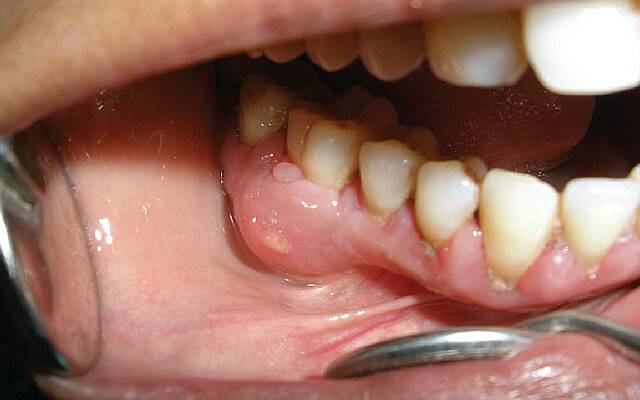Etiology and clinic of chronic periostitis
Machine translation
Original article is written in RU language (link to read it) .
Chronic periostitis is a fairly rare disease in the practice of dentists. However, a competent specialist needs to understand all the symptoms of chronic periostitis, the clinical picture, and the comparative characteristics of chronic periostitis with neoplasms in the patient’s jaw.
Read more about the etiology of periostitis at the webinar Etiology and pathogenesis of inflammatory diseases of the maxillofacial region .
All chronic processes were preceded by an acute stage. Most often, this process, chronic periostitis, was preceded by acute periostitis. Question: what contributed to the chronicity of the pathological process? The answer is simple - a weak immune response. Therefore, chronic periostitis is more common in children or the elderly, or in people with weak immunity. If we talk about children, then quite often dental surgeons have to make a diagnosis of “Chronic periostitis”. This is due to the active growth of bones and periosteum in childhood. Also in children, this process is primarily chronic, that is, there is no acute stage.
Etiology of chronic periostitis
The etiology of chronic periostitis may be due to the following factors:
- acute purulent periostitis with a sluggish course;
- the presence of chronic foci of odontogenic infection;
- in children – with difficulty in teething;
- chronic periodontitis;
- suppuration of cysts;
- inflammatory processes in the maxillary sinuses;
- injury when using removable dentures.
Chronic periostitis develops as a consequence of acute purulent periostitis not only in the case of a weak immune response, but also in case of incorrectly performed periostotomy, when the focus of pus was NOT completely evacuated.
With the presence of chronic foci of odontogenic infection, it is clear: long-term irritation of the periosteum by odontogenic antigens occurs, to which the periosteum reacts with growth - thickening.
In chronic periostitis, the lower jaw is most often affected, namely the angle of the lower jaw and the body of the lower jaw due to a less rich system of blood vessels compared to the upper jaw.
Complaints in chronic periostitis
Chronic periostitis is a process that is characterized by significant thickening of the periosteum, but is completely painless. Therefore, the patient will not complain of pain. Basically, the patient begins to notice pronounced facial asymmetry, which leads to aesthetic dissatisfaction.
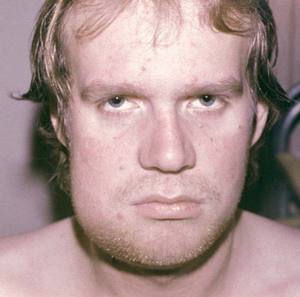
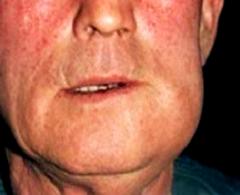
You can find out from the anamnesis that there was previously an acute process that was treated, or there were symptoms similar to acute periostitis (pain, swelling, the presence of a “causal tooth,” the general condition was disturbed, enlarged lymph nodes), which disappeared without treatment.
Clinically, the doctor may note:
- asymmetry of the face due to thickening of the periosteum;
- skin of normal color;
- there is no edema or hyperemia;
- enlarged lymph nodes (painless or slightly painful on palpation, not fused to each other or to surrounding tissues);
- in the oral cavity there is a “causal tooth”, which became the cause of an acute, and then chronic process. Such a “causal tooth” is either more than 50% destroyed or under a filling. When percussion is slightly painful, the doctor may note a thickening of the alveolar process, upon palpation of which no painful sensations occur.
- the oral mucosa is slightly hyperemic, cyanotic, or unchanged.
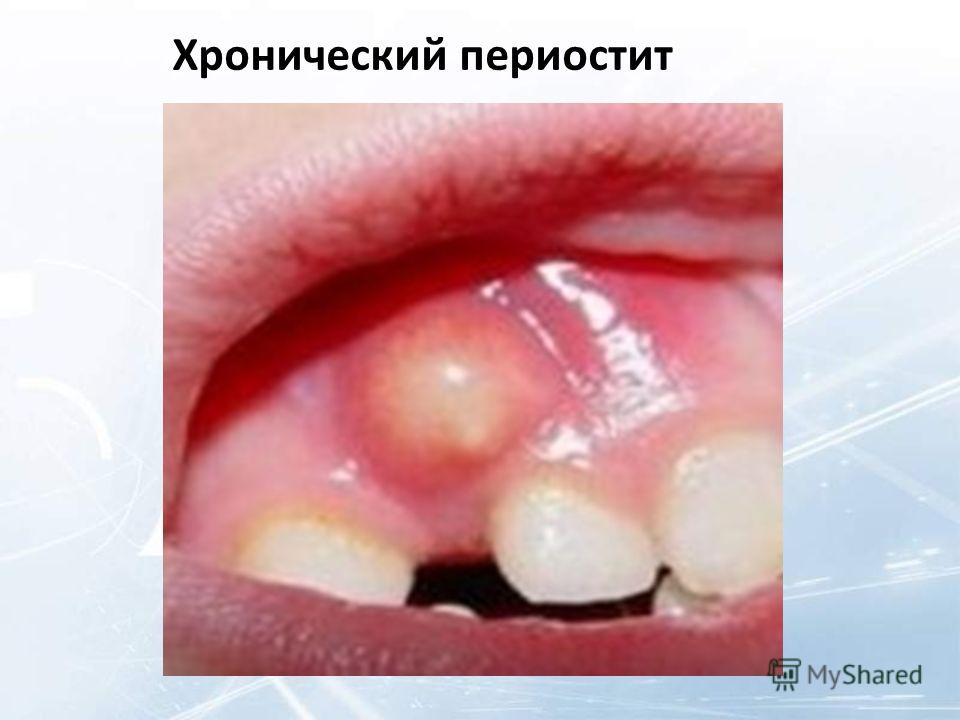
The main method for correctly diagnosing “chronic periostitis” is radiography. To do this, it is better to do a panoramic (survey) radiography.
Radiological signs for chronic periostitis are as follows:
- The “onion bulb symptom” is excess bone formation. Bone tissue is deposited as strips that closely overlap one another, creating the appearance of an onion. These stripes run parallel to the cortical plate of the jaw.

- the bone pattern is not disturbed;
- in the presence of a “causal tooth”, changes in the area of the root apex, characteristic of chronic periodontitis, are determined.
For differentiated diagnosis, to exclude malignant or benign formation, a bone tissue biopsy should be performed.
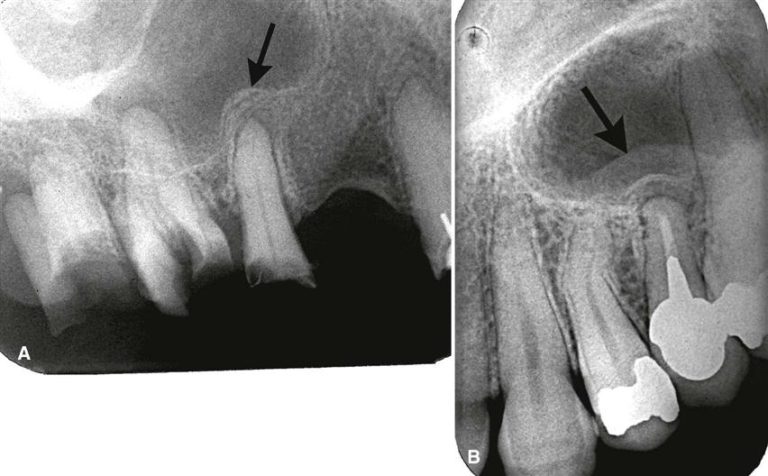
Classification of chronic periostitis
Classification of chronic periostitis by course:
- acute periostitis of the jaw;
- chronic periostitis of the jaw;
- exacerbation of chronic periostitis of the jaw.
According to its form, chronic periostitis is classified into:
- simple chronic periostitis;
- ossifying chronic periostitis;
- resolving chronic periostitis.
Simple chronic and ossifying periostitis are very similar in complaints and clinical picture. The only difference is the outcome of these forms of periostitis.
Features of chronic forms of periostitis
The peculiarity of chronic forms of periostitis is that in their clinical picture they are very similar to each other: complaints, predisposing factors, age, etc. Only the reasons are slightly different, because in the rarefied form the main cause is jaw injury.
So, with a simple form of chronic periostitis, the newly formed bone (osteoid) tissue undergoes reverse development with adequate treatment.
Ossifying chronic periostitis differs in that no reverse development occurs, but everything ends in hyperostosis. Hyperostosis is a condition when the bone itself is not pathologically changed, but the amount of bone substance is increased. Hyperostosis can be local or generalized, and can be childhood. But in the case of chronic periostitis, it is local ossifying chronic periostitis.
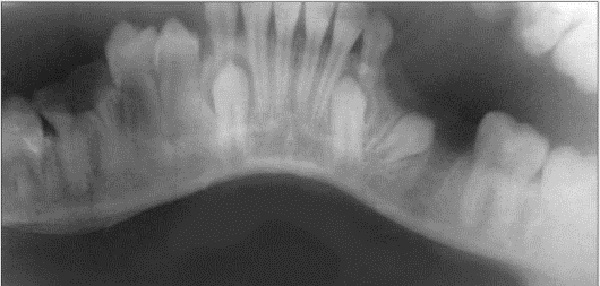
Referential periostitis occurs only after trauma, most often of the lower jaw. The process of thickening of the periosteum in rarefied periostitis is preceded by the formation of a hematoma and its subsequent organization, which leads to compaction of the periosteum.
With resolving periostitis, there are some features on the radiograph. In addition to the “onion symptom”, there are areas of osteoporosis, possibly the presence of a fracture line, splinters.
Treatment of chronic periostitis
Treatment of chronic periostitis primarily involves eliminating the source of odontogenic infection. That is, the “causal tooth” should be removed. In the treatment of chronic periostitis, both conservative and surgical treatment methods can be used. But the conservative method is often not effective, so not only the causative tooth is removed, but also the teeth that are in the lesion and do not represent functional and aesthetic value.
After which it is necessary to remove the excess bone tissue, and the newly formed bone tissue is removed with a chisel or pliers. After removal of excess bone tissue, areas of softening are noticeable on the underlying layer of the cortical plate. The wound should be stitched tightly. In parallel with this, you should assign:
- sulfonamides;
- vitamin therapy;
- symptomatic treatment.
Good results in the treatment of chronic periostitis are noticeable when physiotherapy is prescribed. Electrophoresis with a 1-2% solution of potassium iodide, UHF therapy, and ultrasound are very effective for chronic periostitis.
Drug therapy and physical therapy are prescribed for a course of 8-10 days.
If neither conservative nor surgical treatment leads to positive dynamics, that is, there is no border between the “new” and “old” bones on the radiograph, then they speak of the phenomenon of hyperostosis. If hyperostosis occurs, then in such situations, for aesthetic reasons, jaw modeling surgery is performed.
Differential diagnosis of chronic periostitis
Differential diagnosis of chronic periostitis should be carried out with chronic odontogenic osteomyelitis, post-traumatic osteomyelitis and neoplasms.
The main difference between chronic periostitis and osteomyelitis is the difference visible on the radiograph. In chronic osteomyelitis there is no “onion symptom”; the bone pattern is not visible. In the oral cavity, groups of teeth are mobile, painful, the mucous membrane is pasty, painful on palpation.
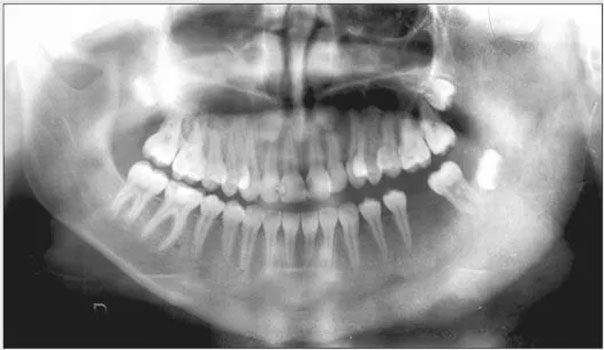
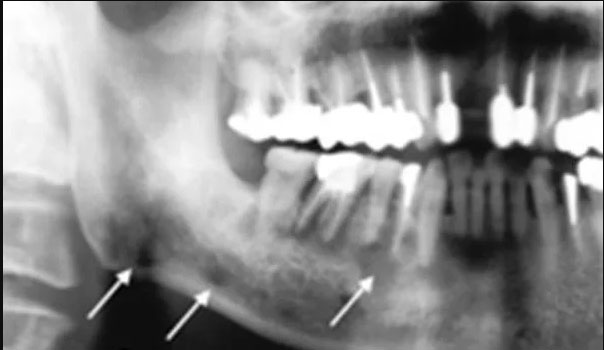
To distinguish chronic periostitis from neoplasms, as described above, a bone tissue biopsy should be performed.
Prognosis of chronic periostitis
With adequate and timely treatment, chronic periostitis has a favorable prognosis. One complication is chronic hyperplastic osteomyelitis.
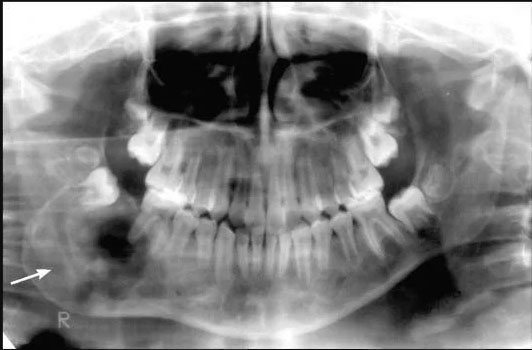
Prevention of chronic periostitis
The main ways to prevent chronic periostitis are:
- Timely sanitation of the oral cavity.
- Correction of immunity.
To summarize, it should be said that chronic periostitis is a process of prolonged inflammation of the periosteum, due to constant irritation of the periosteum by antigens. This process can last from several months to several years, worsen and develop into osteomyelitis.
The main symptoms for diagnosis are:
- facial asymmetry;
- thickening of the jaw;
- swollen lymph nodes;
- X-ray picture: “bulb symptom”, clear bone pattern, presence of foci of odontogenic infection.
A comprehensive guide containing all the necessary protocols for the diagnosis and treatment of inflammatory diseases of the maxillofacial region in the online course Treatment of inflammatory diseases of the maxillofacial region: new approaches .

